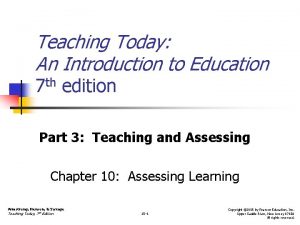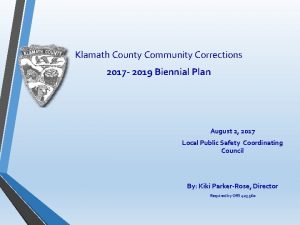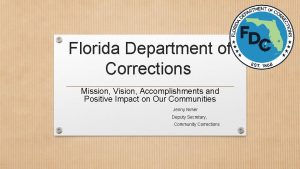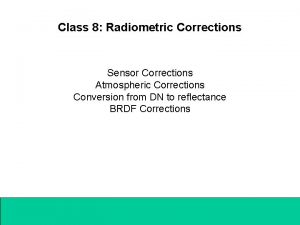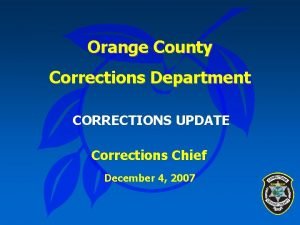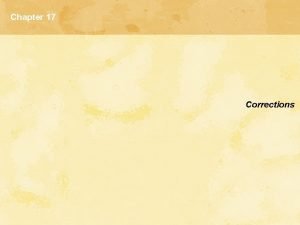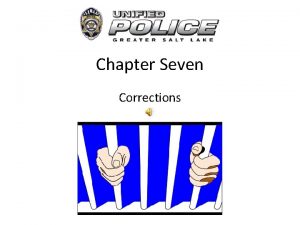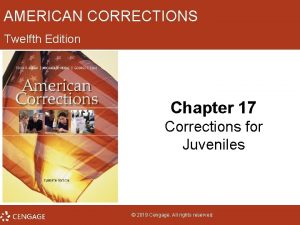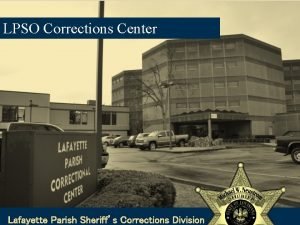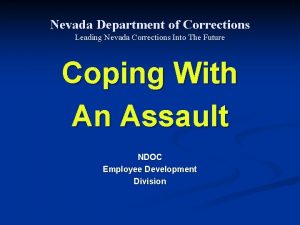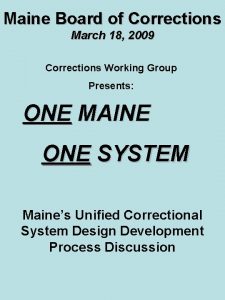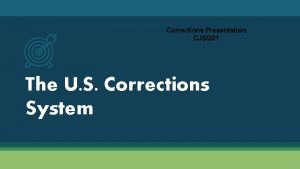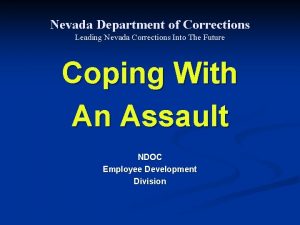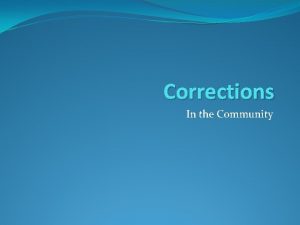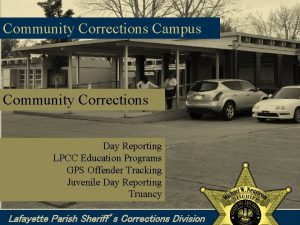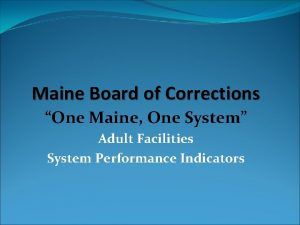Introduction to Corrections Chapter One Corrections Today 6
























- Slides: 24

Introduction to Corrections Chapter One

Corrections Today • 6. 7 million adults under supervision (2002)

Percentage of sentenced offenders under each type of supervision

Prisoners in Federal & State Prisons/Jails

Corrections Defined • “includes all government agencies, facilities, programs, personnel, and techniques concerned with the intake, custody, confinement, supervision, or treatment, or presentencing or pre-disposition investigation of alleged or adjudicated adult offenders, delinquents, or status offenders. ”

Current Trends • Increasing numbers of adults in correctional programs

Current Trends • Expected to go to prison during their lifetime (if current rates do not change): • Women: numbers have increased 42 percent (vs. 27% for men) between 1995 and 2002

Punishment Philosophies

Retribution The belief that punishment must retaliate for a harm or wrong to another.

Deterrence • Certain and severe punishment can discourage future crime by the offender and by others.

Rehabilitation • Providing psychological or education assistance or job training to offenders makes them less likely to engage in future criminality.

Incapacitation Separating offenders from the community to reduce the opportunity for further crime while they are incarcerated.

Other philosophies • Isolation: • Reintegration: • Restitution: • Restoration:

The Outlook • Current Mood: punish, punish – Policymakers/Politicians:

The Outlook

annual cost person The Costs of Housing

cost per bed The Costs of Construction

Criminological Theories • A quick recap

Criminological Theory • Biological: • IQ: • Psychological:

Criminological Theory • Rational Choice: • Social disorganization: • Differential Association (Shaw & Mc. Kay):

Criminological Theory • Social control: • Anomie/Strain:

Correctional Programs

Correctional Programs • Community-based programs • Intermediate Sanction programs

Correctional Programs • Institutional-placement programs
 Today meeting or today's meeting
Today meeting or today's meeting In todays lesson
In todays lesson Today meeting or today's meeting
Today meeting or today's meeting Fingerprint galton details
Fingerprint galton details Today's lesson or today lesson
Today's lesson or today lesson Today's lesson or today lesson
Today's lesson or today lesson One empire one god one emperor
One empire one god one emperor One one one little puppy run
One one one little puppy run One king one law one faith
One king one law one faith One empire one god one emperor
One empire one god one emperor One ford behaviors
One ford behaviors See one do one teach one
See one do one teach one One price policy
One price policy Structure of twelfth night
Structure of twelfth night See one do one teach one
See one do one teach one Asean tourism strategic plan
Asean tourism strategic plan Graphic organizer with the aims of la liga filipina
Graphic organizer with the aims of la liga filipina Teaching today an introduction to education
Teaching today an introduction to education Ask 1 question about today's lesson
Ask 1 question about today's lesson Today's one question quiz
Today's one question quiz Larch corrections center
Larch corrections center Klamath county parole and probation
Klamath county parole and probation Define corrections in criminal justice
Define corrections in criminal justice Comma splice examples and corrections
Comma splice examples and corrections Florida department of corrections mission statement
Florida department of corrections mission statement

















